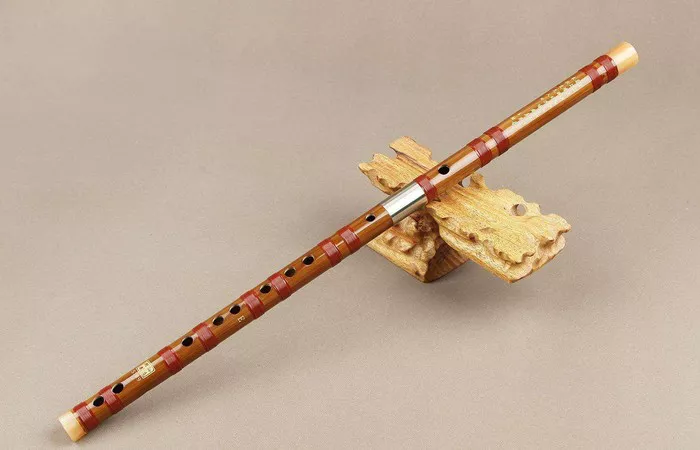The Carnatic flute, deeply rooted in the rich cultural heritage of Southern India, is a mesmerizing instrument known for its soulful melodies and intricate ornamentations. Learning to play the Carnatic flute involves a unique set of techniques and a deep understanding of the classical music traditions it embodies. In this article, we will explore the essential aspects of playing the Carnatic flute, offering aspiring musicians a comprehensive guide to embark on this enchanting musical journey.
Understanding the Basics: Introduction to the Carnatic Flute
Before delving into the intricacies of playing the Carnatic flute, it is essential to understand the instrument itself. The Carnatic flute, also known as the Venu, is a side-blown bamboo flute with eight finger holes. Unlike the Western concert flute, the Carnatic flute does not have keys, making it a challenging yet rewarding instrument to master. Its unique tonal quality and ability to produce microtonal variations make it a staple in classical South Indian music.
Choosing the Right Instrument: Quality Matters
Selecting a high-quality Carnatic flute is the first step towards a successful musical journey. Look for flutes crafted from seasoned bamboo, as the aging process enhances the instrument’s tonal richness. Pay attention to the alignment of the finger holes, ensuring they are precisely positioned for optimal playability. Consider seeking guidance from experienced musicians or flute makers to make an informed choice.
Mastering Breath Control: The Foundation of Carnatic Flute Playing
Breath control is a fundamental aspect of playing the Carnatic flute. Achieving a seamless flow of notes requires mastering the art of controlled breathing. Begin by practicing deep diaphragmatic breathing to build lung capacity. As you progress, focus on maintaining a steady and controlled airflow while playing different scales and ragas. Consistent practice in breath control lays the foundation for achieving the nuanced expressions inherent in Carnatic music.
Learning the Scales and Ragas: Building Blocks of Carnatic Music
Carnatic music revolves around specific scales (known as melakarta ragas) and ragas, which are intricate musical modes. Start by familiarizing yourself with the basic scales and their corresponding fingerings on the flute. As you advance, delve into the diverse world of ragas, each with its unique melodic structure and emotional resonance. Regular practice of scales and ragas enhances both technical proficiency and musical sensitivity.
Perfecting Embouchure: Articulating with Precision
The embouchure, or the way the player shapes their mouth and lips, significantly influences the sound produced on the Carnatic flute. Achieving a clear and resonant tone requires proper embouchure technique. Experiment with different lip positions and angles to find the optimal setup that produces a rich, focused sound. Seek guidance from experienced flute players or instructors to refine your embouchure and produce the characteristic timbre of Carnatic music.
Exploring Ornamentations: Gamakas and Slides
Carnatic flute music is renowned for its elaborate ornamentations, known as gamakas. These embellishments add depth and character to the music, creating a distinctive Carnatic flavor. Practice slides, bends, and oscillations to master the intricate gamakas that define this classical tradition. Gradually incorporate these embellishments into your playing, paying careful attention to their placement within the musical phrases.
Nurturing Rhythm: Talas and Layakaris
Rhythm plays a crucial role in Carnatic music, and mastering intricate talas (rhythmic cycles) is essential for any aspiring flutist. Start with simple talas and gradually progress to more complex rhythmic patterns. Practice layakaris, or rhythmic variations, to enhance your sense of timing and rhythm. Collaborate with percussionists or use rhythmic accompaniment tools to develop a strong rhythmic foundation.
Listening and Imitation: Embracing Tradition
Immersing yourself in the rich tradition of Carnatic music involves active listening and imitation. Regularly listen to recordings of accomplished Carnatic flutists to grasp the nuances of phrasing, expression, and improvisation. Imitate their playing style to internalize the intricacies of the art form. This process of listening and emulation is a time-honored method for learning and preserving the essence of Carnatic music.
Seeking Guidance: Importance of a Guru in Carnatic Flute Learning
In the traditional Guru-Shishya parampara (teacher-student tradition) of Carnatic music, having a knowledgeable and experienced guru is invaluable. A guru provides personalized guidance, corrects technique, and imparts the subtle nuances of the art that may be challenging to grasp independently. Regular lessons with a guru offer a structured learning path, fostering a deeper connection to the music and its cultural roots.
Cultivating Patience and Dedication: Keys to Mastery
Learning to play the Carnatic flute is a journey that demands patience and dedication. Progress may be gradual, but consistent and focused practice is the key to mastery. Embrace the challenges with a positive mindset, understanding that each practice session contributes to your growth as a musician. Celebrate small milestones and stay committed to the lifelong pursuit of musical excellence.
See Also: Mastering the Straight Flute: A Guide for Beginners
Conclusion: Embarking on a Musical Odyssey
Playing the Carnatic flute is a profound exploration of classical music, requiring technical finesse, artistic expression, and cultural immersion. By understanding the basics, choosing the right instrument, and diligently practicing breath control, scales, and ornamentations, aspiring flutists can embark on a fulfilling musical odyssey. With the guidance of a knowledgeable guru and a deep appreciation for the tradition, playing the Carnatic flute becomes not just a skill but a lifelong journey of musical and cultural enrichment.


